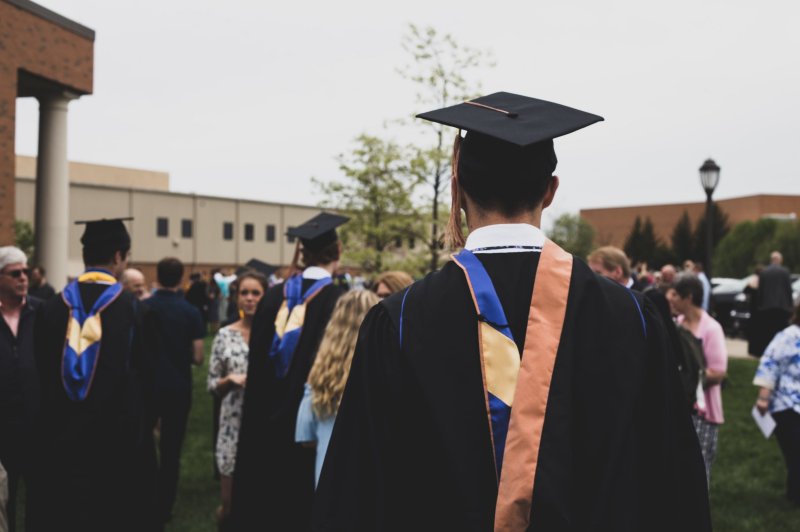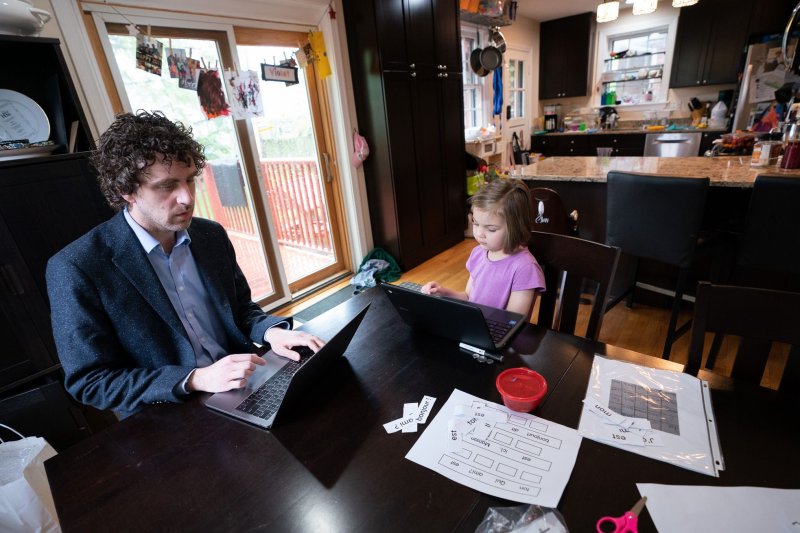
A graduate walks among his peers. Amazon announced that it will fully cover the cost of tuition for its employees' educations.
Sept. 9 (UPI) -- Amazon announced on Thursday that it will pay full tuition -- including the cost of books and fees -- for its more than 750,000 front-line employees.
The retail giant will fund the 2022 initiative by investing $1.2 billion to expand its education and skills training benefits program by 2025.
Rather than offering reimbursement after coursework completion, Amazon will pay the fees in advance. The offer stands for those who have been working at the company for 90 days, including 400,000 employees who joined the company since the start of the pandemic.
"Through its popular Career Choice program, the company will fund full college tuition, as well as high school diplomas, GEDs and English as a Second Language proficiency certifications for its front-line employees -- including those who have been at the company for just three months," Amazon said in a press release.
In 2019, Amazon announced a $700 million commitment to train 100,000 employees by 2025 to help them transition to higher-paying jobs. It began offering nine programs. The three new programs will affect 300,000 employees, representing 30% of Amazon's workforce
To handle a surge in demand during the pandemic of applicants interested in the programs, Amazon switched its training to virtual sessions. These include the Amazon Technical Academy, the Amazon Technical Apprenticeship, the AWS Training and Certifications, and Machine Learning University.
The move comes after other retail giants announced similar plans. Last month, Walmart said that it would cover the cost of college tuition for 1.5 million employees and Target announced that it would fund advanced degrees in 40 different institutions.












